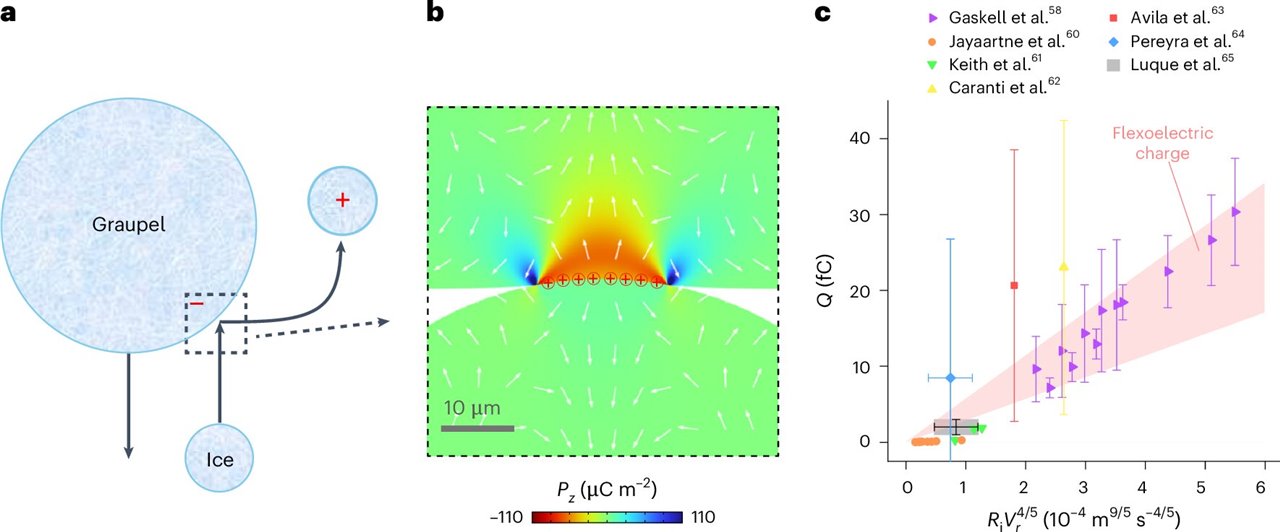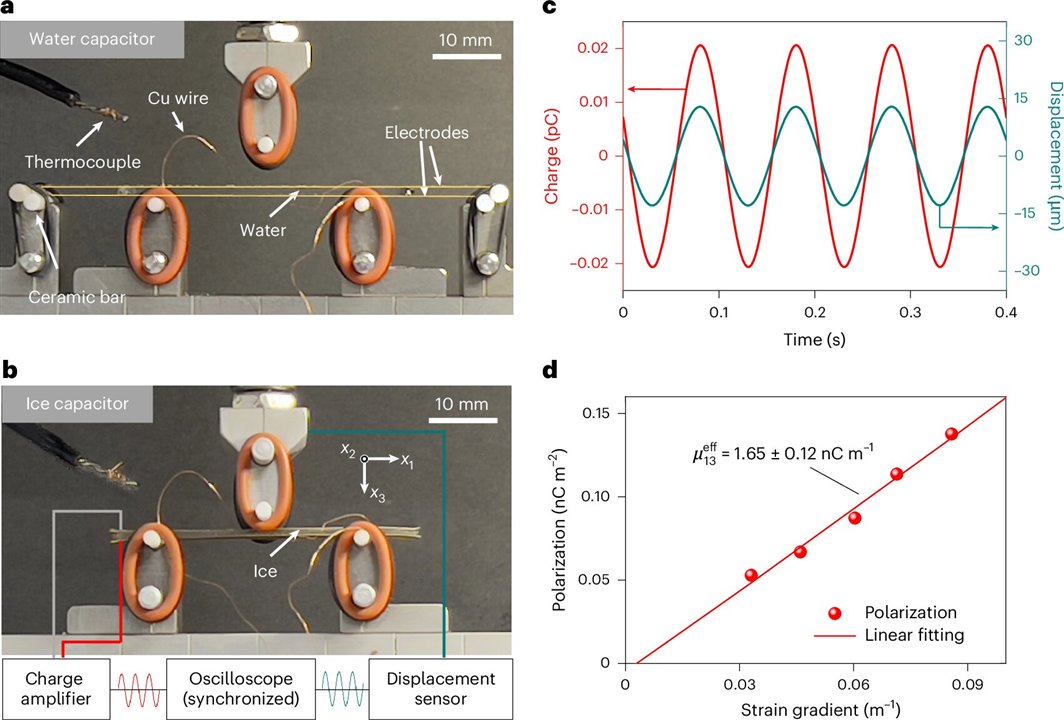
Flexoelectricity occurring in ice. (Image Credit: Nature Physics (2025). DOI: 10.1038/s41567-025-02995-6)
Researchers at the Institute of Nanoscience of Barcelona, Xi'an Jiaotong University, and Stony Brook University have shown that ice can produce electricity. This phenomenon, called flexoelectricity, occurs when the frozen element undergoes mechanical deformation. The team's latest discovery has drawn widespread interest as it shows promise for applications ranging from tracking environmental changes to driving new technological advancements.
Flexoelectricity occurs when materials generate electricity due to their irregular deformation. When it's very cold (temperatures reach below -171°F), the ice surface becomes polarized—known as ferroelectricity. It naturally forms electric polarization on the surface, and this effect can be reversed by using an external electric field. According to the team, this phenomenon may help them unlock new properties of ice and understand its impact on natural electrical activity.
The team discovered that gently bending two ice slabs between two metal plates generates measurable electrical charges even when temperatures increase to 32°F. Their collaboration offers new insights into the complexity of ice and its applications in energy systems.

The team's setup to measure ice flexoelectricity. (Image Credit: Nature Physics (2025). DOI: 10.1038/s41567-025-02995-6)
Additionally, this discovery presents significant practical applications. Gaining a better understanding of thunderstorm dynamics could help scientists gain insight into the complex process behind lightning formation, potentially inspiring the development of self-sustaining sensors that operate in naturally cold environments.
Integrating ice into electronics could enable environmental monitoring devices or sensors that track movements or vibrations in polar regions. Combining ice with other materials and miniaturizing these devices could yield innovative, cost-effective solutions like thermoelectric generators. Using ice as a component in these systems offers an innovative approach to sustainable technology, potentially reducing costs and improving the functionality of devices under extreme conditions.
This finding reveals that natural materials may possess electromechanical properties, overturning long-held beliefs. In this case, ice is a promising key component in low-cost, self-sufficient devices for environmental monitoring and technological applications. Further research could shift our approach to harnessing natural materials for energy generation and electrical system design.
Have a story tip? Message me here at element14.
